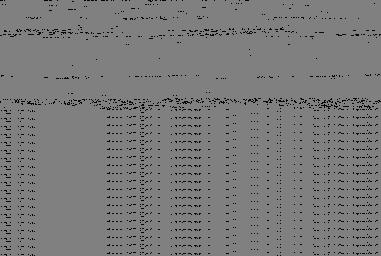Abstract
Chronic leg ulcers are a debilitating complication that affects individuals with SCD 10 times more frequently and at a much younger age than the general population. The underlying mechanism is not completely understood, and current therapies are not very effective.
Severe pain at the ulcer site is often a greater concern to the patients than the status of the ulcer itself and a limiting factor in performing daily tasks and caring for the ulcer. We have previously reported the safety and tolerability of a Phase 1 study of topical sodium nitrite in patients with sickle cell disease and chronic leg ulcer in which escalating concentrations of sodium nitrite cream were applied twice a week to one ulcer per patient, for four weeks.
We investigated pain and physical functioning in adults enrolled in this study. We hypothesized that there would be a significant reduction in the amount of pain at the ulcer site during the course of treatment sodium nitrite. In the subgroup of patients with more than one ulcer, we hypothesized that pain would be unchanged in the ulcers not treated with sodium nitrite.
Adult patients with sickle cell anemia consented to an IRB-approved FDA investigational New Drug protocol at the NIH Clinical Center, and completed a Brief Pain Inventory (BPI) before and after completion of therapy. Patients were asked to identify in detail the areas that were contributing to their overall pain status. Patients completed a 7-day opioid diary in which they were to record all medications taken, and frequency of consumption the week before and the week after completing the trial. In addition a Visual Analog pain Scale (VAS) score was obtained prospectively at each of seven patient encounters during the study for the study ulcer and each of the non study ulcers. A complete opioid usage history was collected before and after the four weeks of therapy to identify changes in opoid analgesic usage. Ulcer size was measured each time. Student T tests and one way ANOVA with Bonferroni correction were used for data analysis.
Eighteen subjects (8 men and 10 women, ages 20 to 59 years); with active chronic leg ulcers were enrolled. Chronic daily opioid use occurred in 89% (16/18) and was attributed to localized pain at the ulcer site in 15 of them. Ulcers had been present for a median of 10 months (range 2 to 300 months); half of the patients had more than one ulcer. Baseline BPI pain severity and interference scores correlated with C reactive protein (CRP)(p=0.01), but not with ulcer age size, hydroxyurea use or transfusions, and % S. BPI scores and VAS scores of the treated ulcer improved significantly after use of topical sodium nitrite(p<0.005 and <001 respectively). In the subgroup that had more than one ulcer, VAS scores for non treated ulcers did not change significantly. Opioid analgesic use trended toward a decrease over time, but was not statistically significant for the entire group (392 mg before vs. 110 mg morphine equivalents after). Opioid analgesic use declined in 9 of 16 subjects, 3/16 increased (one had a new ulcer the last week of study, which was the source of the pain), six did not change. Ulcer size decreased after application of sodium nitrite, in a dose dependent manner, p=0.001. Changes in pain correlated with changes in size, and were dose dependent.
Patients with SCD and chronic ulcer experience significant pain at the ulcer site, which requires systemic narcotic therapy in most of them. Inflammation seems to be the main determinant of pain, not size or age of the ulcer or use of transfusions or hydroxyurea. Therapies that target ulcers, such as sodium nitrite, may reduce systemic opioid analgesic use and facilitate ulcer manipulation and care. Sodium nitrite may affect pain via mechanisms and at a dose that is independent from its healing properties.
No relevant conflicts of interest to declare.
Author notes
Asterisk with author names denotes non-ASH members.



